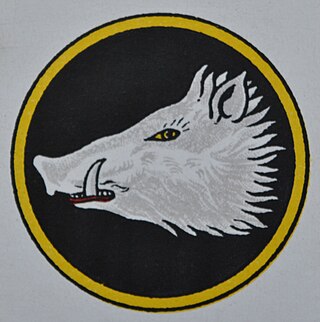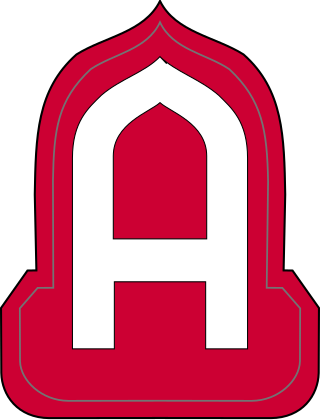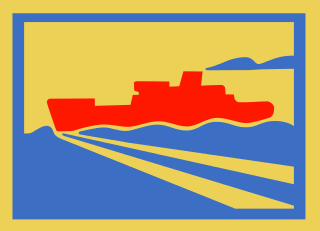
Operation Fortitude was the code name for a World War II military deception by the Allied nations as part of an overall deception strategy during the buildup to the 1944 Normandy landings. Fortitude was divided into two subplans, North and South, and had the aim of misleading the German High Command as to the location of the invasion.

The Twelfth Army was a British Army formation during the Second World War. The Twelfth Army denotation was actually used twice; firstly, in 1943, for a fictional formation and secondly, in 1944/45, in Burma.

The Fourth Army was a field army that formed part of the British Expeditionary Force during the First World War. The Fourth Army was formed on 5 February 1916 under the command of General Sir Henry Rawlinson to carry out the main British contribution to the Battle of the Somme.

Fourteenth United States Army was a fictitious/military deception field army, under the command of John P. Lucas, developed under Operation Quicksilver as a part of the fictitious First United States Army Group.

Operation Ironside was a Second World War military deception undertaken by the Allies in 1944. It formed part of Operation Bodyguard, a broad strategic deception plan instigated by the Allies throughout the year to help cover the June 1944 invasion of Normandy. Ironside supported the overall deception by suggesting to the Germans that the Allies would subsequently land along the Bay of Biscay. It complemented efforts to deceive the Germans into believing that the Allies would also land in southern France at this time. Bordeaux was an important port for the German war effort and had already been a target of commando raids two years earlier. Ironside intended to play on German fears of an invasion in the region, with the aim of tying down defensive forces following Operation Overlord in June 1944.

The 76th Infantry Division was an infantry division of the British Army, which was formed in November 1941 and served during the Second World War. It was created when the Norfolk County Division, initially raised in 1940 to defend the Norfolk coast from a potential German invasion, was redesignated. The division maintained the defensive duties that had been assigned to it, prior to it being renamed, until late 1942 when it became a training formation. It was then responsible for providing final tactical and field training to soldiers who had already passed their initial training. After five additional weeks of training, the soldiers were posted to fighting formations overseas. The formation was used as a source of reinforcements for the 21st Army Group, that was fighting in the Normandy campaign. After all available British troops had left the United Kingdom for France, the division was disbanded in September 1944.

First United States Army Group was a fictitious Allied Army Group in World War II prior to D-Day, part of Operation Quicksilver, created to deceive the Germans about where the Allies would land in France. To attract Axis attention, prominent US general George S. Patton was placed in command of the fabricated formation.

The 80th Infantry (Reserve) Division was an infantry division of the British Army formed at the beginning of 1943, during the Second World War. For the twenty months that the division existed, it was a training formation. It was made responsible for providing final tactical and field training to soldiers who had already passed their initial training. After five additional weeks of training, the soldiers would be posted to fighting formations overseas. Notably, the division was used as a source of reinforcements for the 21st Army Group, which was fighting in Normandy. After all available troops left the United Kingdom for France, the division was disbanded.
Lieutenant-Colonel Roger Fleetwood Hesketh, born Roger Bibby-Hesketh, was a Conservative Party politician in the United Kingdom. He was Member of Parliament (MP) for Southport from 1952 to 1959.

The 11th Division, an infantry division of the United States Army, was activated twice during the First World War. During the Second World War the division was notionally reactivated as part of Fortitude South II.

The 17th Division of the United States Army was formed twice during the First World War. It was then recreated a third time as a Second World War 'phantom division' as part of Fortitude South II.
Operation Cockade was a series of deception operations designed to alleviate German pressure on Allied operations in Sicily and on the Soviets on the Eastern Front by feinting various attacks into Western Europe during World War II. The Allies hoped to use Cockade to force the Luftwaffe into a massive air battle with the Royal Air Force and U.S. Eighth Air Force to give the Allies air superiority over Western Europe. Cockade involved three deception operations: Operation Starkey, Operation Wadham, and Operation Tindall. Operation Starkey was set to occur in early September, Operation Tindall in mid-September, and Operation Wadham in late September 1943.

The US 55th Infantry Division was a 'phantom division' created in October 1943 to cover the departure of the US 5th Infantry Division from Iceland. An entirely notional force, its existence was reported to the Germans only through controlled agents as Iceland was too far from Europe to make use of radio deception.

XIV Corps was a British infantry corps during the First World War. During the Second World War the identity was recreated for deceptive purposes.

The US 59th Infantry Division was a 'Phantom Division' created in May 1944 as part of Fortitude South II. to cover the deployment of the US 35th Infantry Division to Normandy.

The 9th Airborne Division of the United States Army was a military deception created in 1944 as part of Fortitude South II

The US 25th Armored Division was a 'phantom division' created in 1944 as part of Fortitude South II to replace the real US 5th Armored Division when that unit was deployed to Normandy.

The US XXXIII Corps was a 'Phantom Unit' created in 1944 as part of Fortitude South II.














